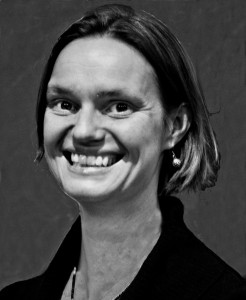Archive for the ‘Majken Jul Sørensen’ Category
Escalating conflicts on the way to peace and justice

By Majken Jul Sørensen & Jørgen Johansen
This article is a short version of a text which was first published with the title “Nonviolent Conflict Escalation” in Conflict Resolution Quarterly, 2016. DOI: 10.1002/crq.21173. In this longer article you can find references to all our sources.
”We have mapped all the conflicts in the world” a senior researcher at PRIO (Peace Research Institute Oslo) told one of the authors at a seminar a couple of weeks ago. If that was true, it would be pretty impressive.
Each of the seven billion people living on earth at the moment are likely to have a considerably number of conflicts every year with their partners, neighbours, friends and family members.
However, the large majority of these conflicts are dealt with in a peaceful and creative manner. Although they can feel burdensome in the heat of the moment, many of them are a way for people to grow as persons and learn more about themselves and each other.
But of course, it was not all these conflicts the senior researcher at the seminar had in mind. She was talking about the UCDP/PRIO Armed Conflict Dataset which includes violent conflicts involving at least one state. However, her statement is symptomatic for an attitude which seems to be widespread within mainstream peace and conflict studies: because they so often focus on violent and destructive conflicts, their language gets “contaminated”.
Thus there is a strong tendency to associate conflict with violence and something undesirable which should be avoided and de-escalated. Just as important, this perception of conflict also ignores all the large-scale societal conflicts fought along nonviolent lines.
In this text we examine some of the ways that nonviolent stakeholders have deliberately and persistently escalated conflicts, and show how such escalations have been fundamental for them to achieve their goals. These actors have created visibility for hardly recognised injustices and highlighted issues that have endured in the shadows of history.
This approach is the opposite of preventing conflicts; rather, it aims to escalate them in order to create change. It counters both the association of conflict with violence and contributes to a deeper understanding of nonviolent resistance. Read the rest of this entry »
Humorous nonviolent actions
By Majken Sørensen
During martial law in the early 1980’s in Poland, graffiti in favour of the illegal trade union Solidarity was quickly painted over by the authorities. This left “blobs” on the walls, so that everyone knew that this was covered graffiti. Activists who identified with a new group called Orange Alternative started to work on these “blobs” by giving them arms and legs so that they became little elves. According to Kenney, who has written about the Orange Alternative and its place in the fall of the communist regimes in central Europe, elves made passers-by “consider the point of the struggle over wall space, and wonder why little elves were threatening to the communists”.(1)
Several years later, the elves came to life at an Orange Alternative happening on Children’s day, 1 June 1987, one of the happenings which became what Kenney calls a “catalyst” for the Orange Alternative. An invitation to the happening was distributed at schools and universities around the city of Wroclaw, and almost 1,000 young people showed up. There they got a red cap, and then they were elves.
Since it was Children’s day, the elves handed out candy to people, danced and sang children’s songs. When the police started to take some of the elves to the police cars they followed without protesting, kissing the police and throwing candy out through the windows. Then the crowd started to shout “Elves are real”. Accounts of this surreal celebration of Children’s day went around Poland in the underground press, providing new images of what protest could look like. (2)
Are activists more creative now?
Sometimes I hear people say that there is so much more humour and creativity in activism now than there was previously. Maybe they are right, but I’m not convinced. The more you start to look for humour and talk to experienced activists about it, the more your will find, also 40 years ago. However, humour is fleeting and difficult to catch. Read the rest of this entry »
Majken Jul Sørensen’s CV
Majken Jul Sørensen became TFF Associate in 2013
majken.sorensen@gmail.com
Education
2011- present
PhD student, University of Wollongong
2005-2006:
1 year MA programme, Peace and Reconciliation studies, Coventry University, UK. Including a dissertation of 15.000 words.
2003-2005:
BA in Sociology, University of Tromsø, Norway. Including a bachelor project of 30 pages.
2002-2003:
One year part time study in “peace work”, University of Gothenburg, Sweden. Read the rest of this entry »

